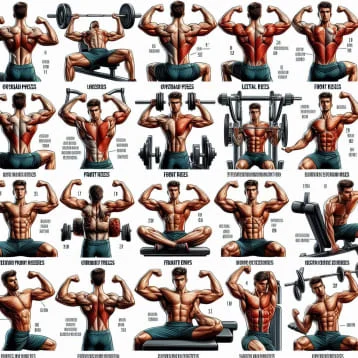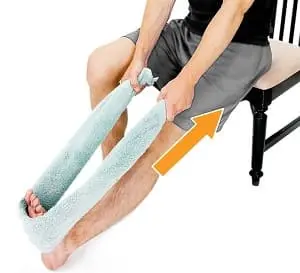Push Ups Exercise: Benefits, Variations, How to Perform?
A Push-Up Exercise: What is it?
Push-ups are a fundamental bodyweight exercise that targets multiple muscle groups, making them an essential component of any fitness routine.
The classic Push-Up is done in a prone position and involves bending and straightening the arms to raise and lower the body while keeping the spine straight and carrying the body’s weight on the palms and toes.
- The push-up is a basic exercise that strengthens the upper body and chest.
- Your health will improve from this activity since it will strengthen your muscles, increase your metabolic rate to burn fat and help your cardiovascular system.
- This exercise, which is common in strength training, begins with the performer in the prone position.
- Targeting the pectoral, anterior deltoids, and triceps, the performer raises and lowers their body while performing exercise.
- The serratus anterior and coracobrachialis are also greatly benefited by this exercise.
- This is a highly rapid and effective method of building muscle.
Which muscle is worked when performing push-ups?
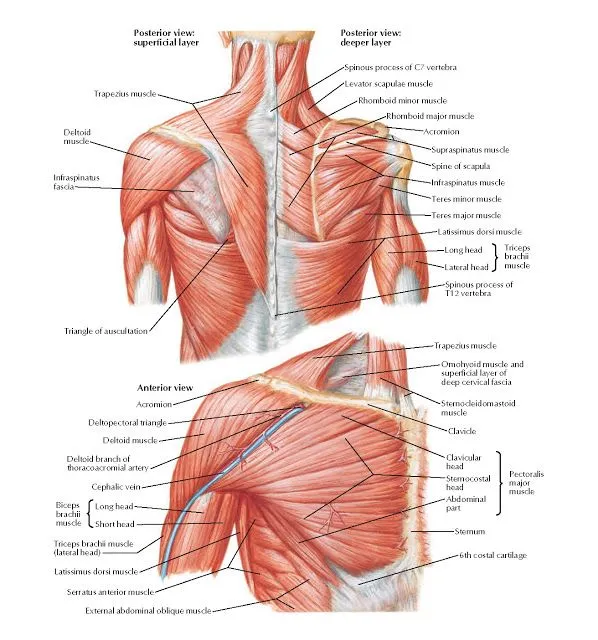
Primary muscles
- Triceps
- Biceps
- Pectoral muscles
- Latissimus dorsi muscle
Secondary muscles
- Hip muscles
- Leg muscles
- Stomach muscles
The advantages:
Analysis has shown that there are several benefits to push-ups, such as stronger bones and improved posture.
Here are some good reasons for including this basic workout in your daily plan.
- Strengthening your upper body with push-ups
The muscles in your upper body, such as your shoulders, triceps, and chest, can be strengthened and toned with push-ups. These muscles come into play when you have to lift heavy objects or push a shopping cart, among other tasks. Your functional fitness can be improved by increasing your upper-body strength, which will make regular duties easier. Additionally, it might improve your athletic performance.
- Push-ups are beneficial to your core
Your core needs to remain active during a push-up in order to keep your trunk strong and your form perfect. To put it another way, planks or push-ups can be utilized as an exercise to improve your core. Exercise balls or other unstable surfaces work particularly well as a surface for advanced push-ups because they support the core.
- Push-ups help correct your posture
Additionally, your posture can benefit from that core stability. Lifting weights with your back, shoulders, and core helps you maintain better posture. This is fortunate because poor posture can lead to headaches, back pain, and breathing difficulties. Low energy and muscle fatigue, which are related to it, can make you perform poorly when exercising.
- Push-ups are good for your bones
One important measure of bone health and strength is bone mineral density. The risk of fractures and osteoporosis rises as bone density declines. Thankfully, you may strengthen your bones with weightlifting and resistance training exercises like push-ups.
- Push-ups are a flexible and easy exercise
Strength training is often linked to weightlifting. However, there are other approaches to gaining muscle. As a result, you may work out anyplace with them as they are lightweight and require no special equipment. The flexibility action can be adjusted to make it harder or easier, depending on your level of fitness.
Guidelines for good push-up form:
The form of a push-up is important, just like any other exercise. You can benefit from improved health and reduced risk of injury.
When you practice push-ups, keep the following in mind;
- For every push-up, maintain a strong core. This will stop your hips from falling and your back from arching.
- Hold your head, neck, and shoulders in a position that is in line with your spine. A few feet in front of you is where you should be looking down at the surface of the ground. Alternatively, you could perform push-ups while looking straight down. Your head is too high or low if you can view your feet or the ceiling.
- Do not raise your hands above your shoulders. The space between your hands is somewhat larger than hip-width when performing a push-up. However, they need to still line up with your shoulders. Your shoulders will be under more strain if they are positioned too far forward.
- Continue breathing. It can be easy to hold your breath or breathe wildly when working out hard. But you must continue breathing to complete your workouts. Breathe in as you lower your body and out as you raise it during each push-up.
How is a push-up exercise performed?
- You must perform this exercise while lying on your back on the ground with your hands wider than your shoulders.
- Avoid twisting your elbows.
- Maintain a slightly bent position for them.
- When your feet are hip-width apart and your body is balanced on your hands and toes, extend your legs straight out.
- Pulling your belly toward your spine can help you contract your core muscles and engage your abs.
- Take a breath and slowly bend your elbows until you are lowering yourself to the ground and your elbows are at a ninety-degree angle.
- Exhale by tightening your chest muscles, raising yourself back up with your hands and taking a step back to your starting posture.
- Throughout the exercise, maintain the contraction of your abdominal muscles and maintain a straight body.
- Push-ups are something you can do as much as it feels comfortable.
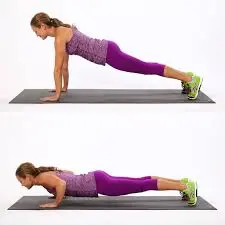
Numerous variations for push-up exercises:
There is a push-up variation for each level of experience that can help you target a particular muscle more effectively or make the activity easier for a beginner.
Bent-Knee Push-Up
This modified variant of the regular push-up is performed on the knees, as opposed to the toes. Verify the alignment of the knees, hips, and shoulders. Refrain from bending at the waist.
- This exercise starts with you lying on your back, your hands shoulder-width apart on the ground in front of you.
- Extend your arms.
- As you bend your arms, contract your abdominals and lower your trunk until your eyes are fully visible on the ground.
- Hold this position for a few seconds.
- Straightening your arms, raise your trunk once again.
- Then relax.
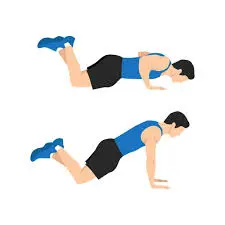
Incline push-ups
Choose this version if you want to make the exercise easier.
- You will need a bench for this exercise, and you will need to stand a few feet away from it.
- To perform this variation, place your hands on a bench and use the same fundamental push-up technique.
- To lower your body, flex your elbow to a 90-degree angle.
- Hold this position for a few seconds.
- Then return to your neutral position.
- Then relax.
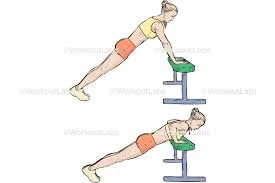
Decline push-ups
It’s harder than a conventional push-up and just takes one bench or box. Place your feet up on a box or bench and perform push-ups.
- By adjusting the bench height, you may change the resistance by utilizing only your body weight.
- Bend with your back against the bench.
- Put your hands on the floor, your elbows at a 45-degree angle, and your shoulders above your wrists.
- Position your feet above the bench.
- Use the muscles in your quadriceps, glutes, and core.
- Next, Maintain a straight back and neck, bend your elbows, and drop your chest to the floor.
- Hold this position for a few seconds.
- Extend your elbows and press into the ground to return to the beginning position.
- Then relax.
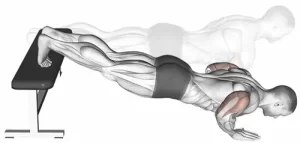
Diamond push-ups
The triceps muscles are worked during this push-up variation.
- The following exercise is a set of push-ups, where your hands should be in the middle of your chest and your elbows should be close to your sides throughout each repetition.
- Next, press your thumbs and index fingers together to form a diamond shape.
- Bend your elbows to bring your hands down toward your sternum, keeping your arms firmly against your sides the entire time.
- Hold this position for a few seconds.
- Then return to your neutral position.
- Then relax.
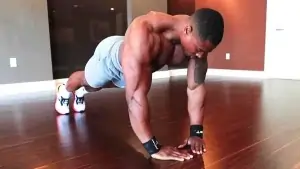
Medicine Ball Push-Up
Take a medicine ball in your hands. The movement gets more difficult as the ball gets smaller. Littler medicine balls have less stability, making them more proprioceptively hard.
- Grasp the top of the ball and place it beneath your chest to begin a push-up.
- Your hands should be directly below your shoulders and off to the top or sides of the ball.
- As though you were performing a regular push-up, maintain a straight back.
- Your back should be straight as though you were in a plank posture.
- Lower your chest to the ball gradually while bending at the elbows.
- Your elbows should be positioned horizontally, not wildly out to the sides, or designed directly at your rear.
- Hold this position for a few seconds.
- Then return to your neutral position.
- Then relax.
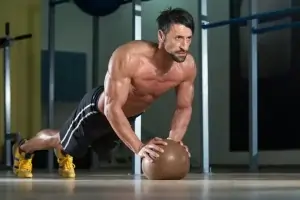
Wide Arm Push-up
- When you begin in the plank posture, your hands should be wider than your shoulders.
- Point your fingers forward or outward slightly.
- Bend your elbows out to the side as you gradually lower your body to the ground.
- When your chest gets slightly below your elbows, stop.
- Hold this position for a few seconds.
- To bring your body back to the starting position, press into your hands and engage your core.
- Then relax.
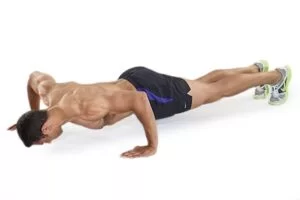
Wall push-ups
- Place your feet only a few inches away from a wall.
- Arms and legs straight, lean forward and place your hands around chest height on the wall. (It is similar to a push-up, but on a higher plane and right up against a wall.)
- You should be able to feel your arms supporting a portion of your weight.
- Lower your chest toward the wall and slowly bend your elbows.
- As your head and chest reach the wall, stop.
- As you stop here, pay attention to maintaining your alignment of the body.
- Avoid having your hips jump up or sag toward the wall.
- Return to the beginning posture by pushing through your hands and straightening your arms.
- You may feel your shoulder, chest, and arm muscles tense during each repetition.
- Then relax.
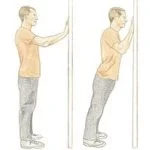
Clapping push-ups
- To perform this exercise, you must position yourself in the push-up position and place your hand beneath your shoulder and fingers to support your arm.
- As though you were about to perform a pushup, begin lowering your body until your chest is nearly in contact with the ground.
- Make sure your hands are strong enough to help you raise yourself off the floor.
- Clapping your hands together is an optional way to increase the difficulty.
- As soon as you gently touch the ground, begin your next rep.
- Then relax.
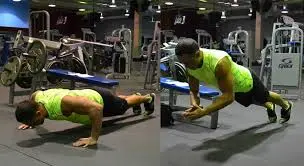
Use these guidelines for safe exercise:
- Before beginning any exercise, make sure your body is sufficiently warmed up.
- Stop exercising if you begin to experience pain.
- Increase the number of repetitions and length of your exercises gradually to prevent overtraining and sore muscles.
- Use good form when exercising to protect your body and get the results you desire.
- Try to wear clothes that don’t put too much restriction on your range of motion when working out. Use loose clothes as an option.
- Before beginning an exercise routine, it is advised that you inhale deeply and exhale slowly.
At what point should you stop performing this exercise?
- In the event of a shoulder injury
- If a wrist injury affects you
- If you sustain an elbow injury
- If, when exercising, you have shoulder ache
- If your physician suggested that you relax
Typical Mistakes Made When Pushing Ups:
- Middle Sagging
After you’ve gotten the hang of the plank, try your hand at push-ups to maintain your body straight.
- Elbows Locked
You may make the mistake of locking your elbows at the top of a push-up if you’re feeling tired and need a small break. However, this might strain or injure your joints since it puts too much stress on them. Always keep your elbows slightly bent. You can’t go on to the next set until you’ve taken a break and rested.
- Hands Moved Too Far Forward
Your shoulders will be under additional stress if your hands are extended farther than your shoulders.
- Incorrect Neck Positioning
Throughout the action, keep your neck neutral, your head in a straight line with your trunk, your eyes looking down at the floor, and your top lip pointing away from your foot. You are out of alignment when you can see your foot with your chin pointing up or down your head.
Summary:
One resistance exercise that you can do without any equipment to help you develop muscle strength is the push-up. Furthermore, they are not limited to dedicated gym users. Whichever style of push-up you choose standard or modified you are going to receive the health benefits.
Push-ups are an excellent way to strengthen your upper body when you begin your day at home early in the morning. To begin this workout, choose a simple exercise that just needs five repetitions on the first day. To improve your upper-body stamina, you can practice variations and gradually increase the amount of repetitions as you grow better.
It can be used five times a week for practice. Another option is to take one day off and spend it relaxing or practicing easy stretches for your upper body. Pain must not come after exercise.
FAQ:
What advantages do variants on push-ups offer?
Your chest will be worked harder during pushup variations the more you spread your hands apart. This suggests that a wide-grip pushup will concentrate more on your pectoral strength than a standard pushup.
What’s the ideal number of pushup repetitions per day?
To prevent strain or injury, they must be done with the right form. People who are in the middle or advanced stages may have higher expectations. Divided into several sets, the range can be anything from twenty-five to one hundred pushups per day.
Could I perform push-ups every day?
In a technical sense, you could perform pushups every day. Still, there are a few things to think about if you want a safe and wealthy practice. Most importantly, you shouldn’t stop working out once you’ve reached the repetition limit.
A push-up is what kind of exercise?
It is a closed kinetic chain exercise that uses your body weight as resistance and doesn’t require any instruments. It may be adjusted to the individual’s level of fitness thanks to its numerous variations. The triceps, pectorals, and shoulder muscles are worked out.
What is the objective of push-ups?
The chest muscles, shoulders, and triceps are worked. They can also engage in the abdominal muscles, which strengthens the lower back and core when done correctly. One quick and easy workout that can help you gain strength is the push-up.
Is performing pushups every day safe?
Push-ups are a great way to strengthen your upper body and achieve a controlled, slim body. Try doing them every day. When performed correctly, pull-ups can help strengthen the lower back and abdomen through push-ups.
How do variations on push-ups work?
In terms of pushup variations, your chest will be worked more when your hands are farther apart. This means that compared to a typical pushup, a wide-grip pushup will focus on your pectoral strength more.
Which kind of pushup works best?
The wide push-up is a great exercise to work the muscles in your chest. To protect your shoulders, make sure to maintain your elbows pointing back and refrain from spreading your hands too far.
References:
- Nov. 25, 2023c: Physiotherapist, N. P. Push Ups Exercise: Health Advantages, Types, and Techniques? Mobile Clinic for Physiotherapy. Exercise for Push-Ups: https://mobilephysiotherapyclinic.in/
- Image 1, Pediagnosis, 14 June 2019. Shoulder Anatomy Muscles. Pinterest. https://www.pinterest.ca/pin/607211962240619446
- Image 6, F. L. Regime (2023, September 29). How to Perform, What Muscles Are Worked, and Why Should You Do Diamond Push-Ups? Mild. Diamond push-ups: how to work your muscles and reap the benefits (@fitliferegime)
- Image 8, September 14, 2021, Pmirda. The Optimal You: The Clapping Push-Up Exercise. The Ideal Self | Holistic Nutrition & Virtual Personal Trainers. The-Optimal-You.com/clapping-push-up



